
Fig. 1. William Merritt Chase by Annie Traquair Lang (1885–1918), c. 1910. Inscribed in a later hand “W M. Chase” at lower left. Oil on canvas, 30 by 25 inches. Metropolitan Museum of Art, gift of Margaret and Raymond J. Horowitz.
In late October 1916 the American impressionist artist William Merritt Chase lay dying at his town house on East Fifteenth Street in Manhattan. During those last days, the painter Annie Traquair Lang, his protégée since she was a teenager, paced in a nearby park and peered up at his windows. She called the family, asking for a chance to say goodbye. Chase’s wife, Alice, would not let Lang come in. Within a day or so of his death, the family buried him at Green-Wood Cemetery in Brooklyn. No one was invited to the funeral.1
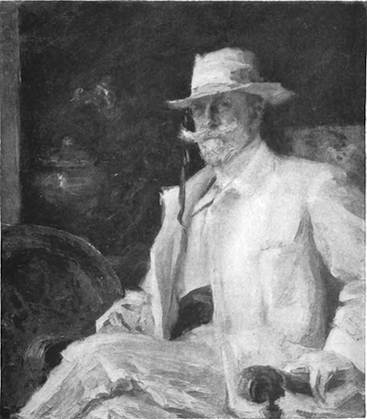
Fig. 2. Halftone engraving of painting in Fig. 1 by H. Davidson, showing the sections that were later cropped, published in The Century Illustrated Monthly Magazine, vol. 83, no. 6 (April 1912).
Lang had painted alongside Chase in Europe and California and simultaneously exhibited her portraits, landscapes, and still lifes in venues from San Francisco to Rome. She adapted her mentor’s energetic brushstrokes and spontaneous compositions and then blazed her own trail, with impasto dabs of jewel-like colors and nearly abstracted forms. Chase posed for a portrait by her (Fig. 1). He painted her (Fig. 3), too, her peachy skin edged in black lace, and the Metropolitan Museum of Art bought that canvas from him in 1913. At some point the two artists became lovers.
Alice apparently did not like Lang. Within months of Chase’s death, she had his portrait of Lang removed from the Met and replaced with a Chase portrait of herself, sewing clothes for one of the couple’s thirteen children (Fig. 10). Soon after Lang’s death during the Spanish flu pandemic of 1918 (at age thirty-three), unknown nefarious people forged Chase signatures on her canvases and wiped away her name, to increase the value of the paintings.
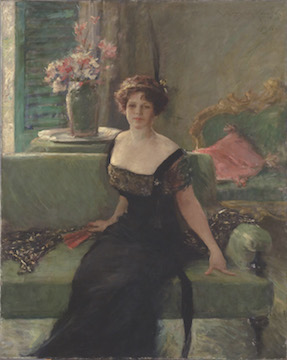
Fig. 3. Portrait of a Lady in Black (Annie Traquair Lang) by William Merritt Chase (1849–1916), 1911. Signed and dated “Wm M. Chase. / 1911.” at upper right. Oil on canvas, 59½ by 47¾ inches. Philadelphia Museum of Art, Alex Simpson Jr. Collection.
This spring I set out to bring her achievements to light, inspired by a dossier compiled by the late eminent Chase scholar Ronald G. Pisano. He started researching Lang in the 1970s, when her major portrait of Chase surfaced at auction. Bearing a fake Chase signature, it was mislabeled as a self-portrait. Pisano found evidence attributing it to Lang, and he unearthed more of her paintings and related documentation. After Pisano’s death in 2000, his partner, D. Frederick Baker, and researchers including Carolyn Lane, completed exhaustive books about Chase that mentioned Lang and added to the record.2
My CV for Lang fills twenty-five pages so far. Hardly anything she wrote seems to survive, but I have tracked down her descendants, about twenty of her paintings, and a half-dozen works by Chase that she owned.

Fig. 4. A group shot of William Merritt Chase’s Bruges art class c. 1912, with Annie Lang second from right. Smithsonian Archives of American Art, Harriet Blackstone papers, 1870–1984.
Pisano speculated that Lang’s “vital, spirited painting had a rejuvenating effect on Chase’s own work.” He wondered “what might have become of her talent had she lived.” The obliteration of her signature on an unknown number of canvases, he wrote, “is the ultimate crime that could be perpetrated against an artist.”3
The minimal source material has allowed me to trace her biography but only glimpse her personality. Lang was the oldest surviving offspring in a Philadelphia family of seven children (four reached adulthood) and comfortable means. Her mother, Winona Barker Sewell Lang, was a Brooklyn native of British descent, and her father, James Traquair Lang, was a lawyer and real estate investor. James’s Philadelphia ancestors included the engraver George Shortread Lang, known for rendering scenes from the lives of Christopher Columbus and George Washington, and the stone carver James Traquair, who marketed marble busts of historic figures such as William Penn and Washington.4

Fig. 5. Tea Time Abroad by Lang, c. 1911–1912. Signed “A. Traquair Lang” at lower left. Oil on canvas, 29 by 36 inches. The faintness of Lang’s signature suggests that it may have been tampered with. Private collection.
Around age sixteen, Lang studied at the Shinnecock Hills Summer School of Art in Southampton on Long Island, which Chase had founded in 1891. Tourists flocked to watch him charismatically critique the classes; he advised students to “play more with your brush!” and warned against “too much timidity!”5 Chase had overcome humble origins—he grew up in a small town in Indiana, where his father ran a shoe store—to become an art world celebrity. Alice tended their brood of children (eight survived infancy) while he taught in and around New York and Philadelphia. He tirelessly turned out paintings, ranging in subject matter from glistening fish and Shinnecock dunes to James McNeill Whistler and President Rutherford B. Hayes.
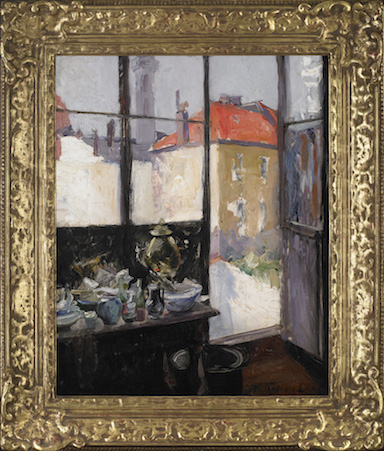
Fig. 6. From Mr. Chase’s Studio Window, Bruges, Belgium by Lang, c. 1912. Signed “A. Traquair Lang” at lower right. Oil on cradled canvas, 25½ by 20¾ inches. Private collection.
By age eighteen Lang had won prizes for classwork at the Public Industrial Art School and the Philadelphia School of Design for Women (now Moore College of Art & Design). The Art Club of Philadelphia and the New York Water Color Club hung her floral and landscape paintings. Around 1906 she started studying with Chase again, at the Pennsylvania Academy of the Fine Arts. The school gave her scholarships for European travel. She also spent a summer or two in the North Carolina hills, where her mentors included the landscape painter Elliott Daingerfield. “An artist could return there for many years and still find miracles to paint,” she told the New York Herald.6
In 1909 and 1910 newspapers from Buffalo to Spokane ran short wire-service articles about the “popular Philadelphia beauty.” Photos showed her wearing a one-shouldered hourglass gown for an art students’ costume ball. Reporters quoted Chase’s prediction that Lang would “become one of the leading American portrait painters.” He was “so enthusiastic” about her “remarkable ability,” he added, “that I sat for a portrait.”7
She first painted him in 1910 in Florence, where he held classes for well-heeled Americans at his hillside property called Villa Silli. He’d filled its high-ceilinged rooms with American and Florentine antiques. (It now serves as a nursing home and a bed-and-breakfast called L’Orangerie di Chase.) He posed for Lang in dapper white (Figs. 1, 2), with a still life alongside his tapestry armchair. A black ribbon twirls from his pince-nez to a turquoise ring on his neckerchief. In summer 1911 he painted Lang in black at the villa. Sunlight glints on the pale green sofa’s black legs (Fig. 3). A feather rises like smoke from her headdress. Her shawl is splayed behind her, her red fan slightly open on the sofa, and her sash spills to the floor.
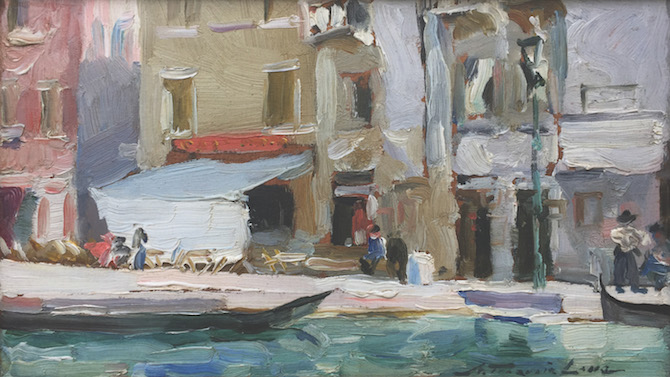
Fig. 7. Venetian Piazza by Lang, c. 1913. Signed “A. Traquair Lang” at lower right. Oil on panel, 5¾ by 9¾ inches. This was one of twenty-six paintings by Lang exhibited at the Knoedler Gallery in New York in April 1917. Collection of Stan Mabry.
Biographies of Chase mention Lang only as an admired student. Lang family members, however, report that the affair was a poorly kept secret. By the time she posed for the painting in black décolletage, she had moved to the Colonial Studios on West Sixty-Seventh Street in Manhattan, a stretch of new buildings with generous windows to accommodate artists. (Her neighbors included the photographer Lillian Baynes Griffin and the artists Rhoda Holmes Nicholls and Clara Weaver Parrish.) The 1910 portrait of Chase in white brought her nationwide attention. She lent it to the Carnegie International in Pittsburgh, the Art Institute of Chicago, the Corcoran Gallery of Art in Washington, DC, and the National Arts Club in New York, among other venues. (It sometimes hung not far from his 1911 painting of her.)
The International Studio admired her depiction of “the most prominent figure in the American art world, virile in treatment . . . with the dash and ‘brio’ that command instant attention.”8 Independent women started posing for her, including the illustrator Helen Thurlow, the Broadway actress Maude Adams (known for playing Peter Pan), and the Florentine painter and poet Gabriella Fabbricotti. In 1914 American Art News observed that Lang was “progressing wonderfully.” Her portrait of a woman in a kimono, on view at the Carnegie, “while, of course, suggestive of the technique of her master, Chase, has still original force and character.”9

Fig. 8. Contribute a Dollar to the Cause and Mary Austin Will Tell You Your Heart’s Desire by Lang, c. 1915. Signed “A. Traquair Lang” at lower center-right. Watercolor on paper, 75¼ by 35½ inches. Huntington Library, Art Collection, and Botanical Gardens, San Marino, California, Mary Hunter Austin collection.
Lang and Chase painted and taught together in Bruges (1912), Venice (1913), England (spring 1914), and Carmel, California (summer 1914); they sometimes crossed the Atlantic on the same ship, and they both maintained studios in a Manhattan building on what is now Park Avenue South.10 She sketched him and his students and workplaces (Fig. 6). She rendered his Bruges plein-air class (Fig. 9) as an almost cubist composition of gowns and easels. She reduced Venice streetscapes to stabs of thick brushwork (Fig. 7). Isabella Lothrop, a Detroit heiress, posed for Lang and Chase while dressed in eighteenth-century drag for a Bruges costume ball (Fig. 12). The writer Mary Hunter Austin, who organized publicity for the Panama-Pacific International Exposition in San Francisco in 1915, also sat for Lang (Fig. 8) and Chase. The 1915 expo jurors devoted a gallery to Chase’s work; Lang won a silver medal for two Venice views and two portraits of women in kimonos.
Yet she suffered from some crippling self-doubts. In early 1916 she labored for hours over a bust portrait of Mary Austin, but then despondently scraped the canvas clean. As the head and neck outlines vanished, “tears were streaming down my face,” Lang told her writer friend. The composition “did not hang together and it did not flow. It had lost that directness that a portrait must have.” She hoped to try again sometime, “to get back a little self-respect and confidence.”11
That letter is Lang’s only substantive correspondence that I have uncovered. Pisano found her lament to the artist Estelle Ream Manon (later Estelle Manon Armstrong), written a week after Chase’s death.12 Lang recalled seeing “the master” in failing health, “breaking and going to pieces before my eyes!” (He suffered from cirrhosis.) The family’s “undignified funeral” amounted to “simply a scandal.” She and Chase were “deeply fond” of one another, but there was “never anything but beauty” in her “dear treasured association” with him.
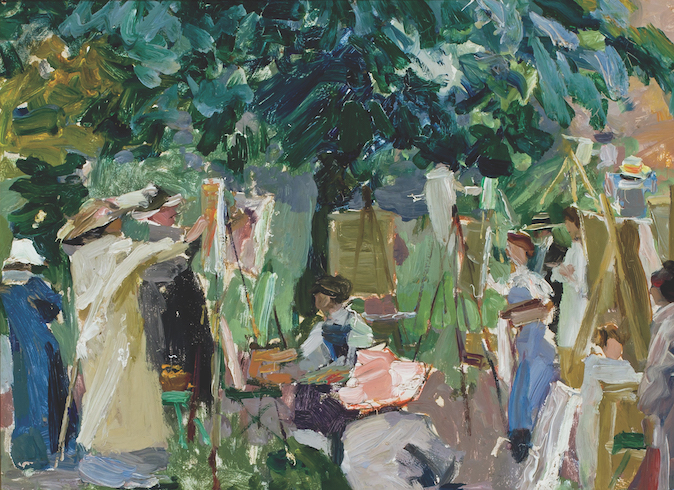
Fig. 9. William Merritt Chase’s Summer Class, Bruges by Lang, c. 1912. Oil on panel, 10½ by 14 inches. Shannon’s Fine Art Auctioneers, Milford, Connecticut; photograph by Joseph Bartolomeo. Collection of Stan Mabry.
Within months of Chase’s death, Lang became known as his student “who best assimilated his technique and verve,” according to American Art News.13 In 1917 Knoedler gave her a solo show, with twenty-six paintings depicting Europe, California, the decks of the Lusitania, glass and ceramic tableware, Countess Fabbricotti, and Chase.14 The New York Sun mistook her for a “Mr. Lang” and complained about “too many vivacious touches” in the palette,15 but the New York Times called her work “rich in character and justly observed.”16 A four-page profile in The International Studio praised her “individuality of vision and handling.” It described her holdings of Chase paintings (which Knoedler also displayed) as “in all probability the finest private collection of his works in this country.”17
Lang somehow acquired Chase’s 1911 portrait of her after Alice retrieved it from the Met and replaced it with For the Little One. It may well have been pricey, as Lang died mired in debt.
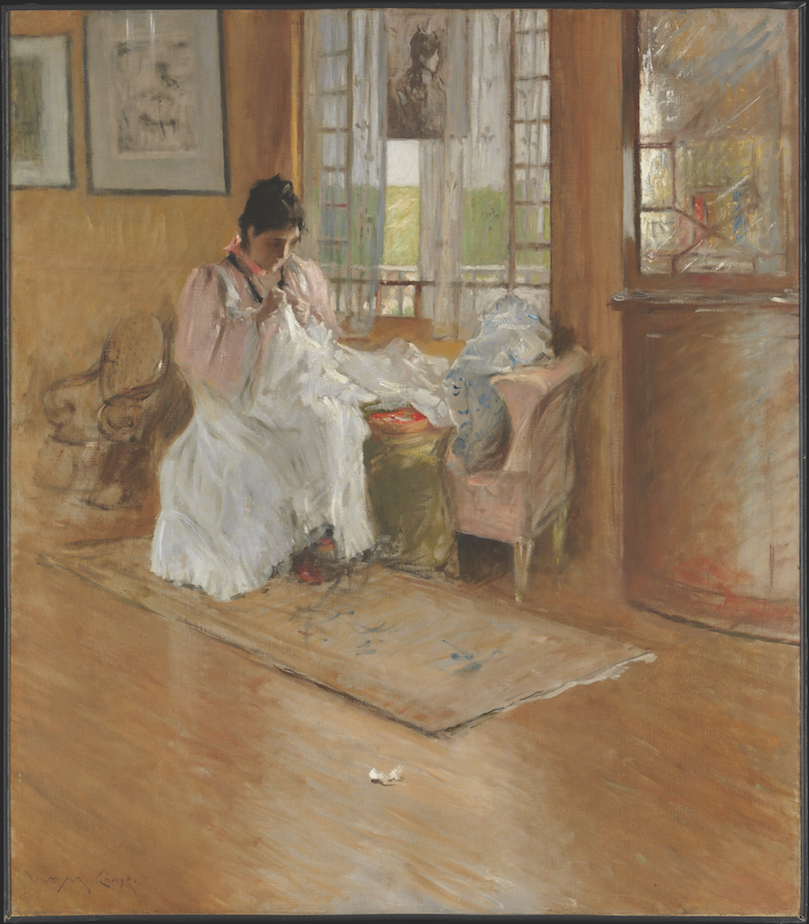
Fig. 10. For the Little One by Chase, c. 1896. Signed “Wm M. Chase.” at lower left. Oil on canvas, 40 by 35¼ inches. Metropolitan Museum of Art, Amelia B. Lazarus Fund.
Lang spent most of 1918 painting in Cuba, Puerto Rico, and the Dominican Republic. By late October she had returned to New York and made plans to volunteer at battlefield canteens in France. But she never used her ocean liner ticket. The offcial cause of death was bronchopneumonia. Gallerists and auctioneers descended on her estate. Chase’s portrait of Lang soon ended up at the Philadelphia Museum of Art. Lang’s dreamy expression mesmerized the donor, Alex Simpson Jr.: “No one without a real soul could have had such eyes, and no one but a real artist could have painted them,” he wrote.18
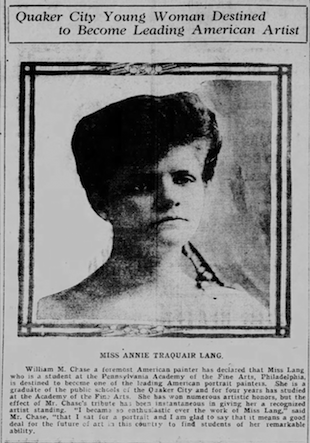
Fig. 11. Clipping of a story about Lang that appeared on the front page of the Great Falls (Montana) Tribune, November 28, 1910.
By the 1930s someone had sliced away foot-wide strips from the bottom and left side of her portrait of Chase and scrawled “W. M. Chase” at his elbow. The supposed self-portrait was exhibited and acclaimed; the New York Sun called it “exceedingly clever.”19 In 1973 it sold for $47,500 at Sotheby’s in New York, setting a Chase auction record. But then Pisano brought out 1910s published images of Lang’s original. Sotheby’s sheepishly took back the adulterated canvas and then reattributed and reoffered it. The collectors Raymond and Margaret Horowitz bought it for $3,240 and donated it to the Met.
Pisano identified a few other paintings with questionable Chase signatures and Lang’s characteristic “exuberance of brushstroke and flair for color.”20 ( The University of Minnesota Duluth’s Tweed Museum of Art owns a park scene with “W. M. Chase” forged on the front and Lang’s penciled signature on the back.) About twenty paintings have been attributed to her. Most belong to private collectors, including the historian and American paintings dealer Roy Wood, who has researched Lang extensively, and members of the Lang and Lothrop families. Among the Chase works she owned is his 1915 self-portrait now at the National Gallery of Art, inscribed “To my friend Annie T. Lang.”
At the Met, her portrait of Chase hangs behind thick glass in the American Wing’s Luce galleries. The inscription “W. M. Chase” on his truncated sleeve is far more visible than her name, printed on a tiny label at the base of the vitrine.

Fig. 12. Isabella Lothrop by Lang, c. 1912. Signed “A. Traquair Lang” at lower left. Oil on canvas, 42 by 29 inches. Chase painted the same woman—one of his summer students and a close friend of Lang’s—in the same outfit at a Bruges costume party. Private collection.
EVE M. KAHN is completing a biography of another forgotten Chase student, Mary Rogers Williams, which will be published by Wesleyan University Press. She welcomes further information about Annie Traquair Lang at evemkahn@gmail.com.
1 Annie Traquair Lang to Estelle Ream Manon (later Mrs. William Armstrong), November 3, 1916, from Chase scholar Ronald G. Pisano’s research files. I am indebted to D. Frederick Baker for access to Pisano’s files, and to Kathleen A. Foster, the Philadelphia Museum of Art’s Robert L. McNeil Jr. Senior Curator of American Art, for her invaluable input. 2 Yale University Press has published the multivolume catalogue raisonné under the general title William Merritt Chase. 3 The quotes are from material in Pisano’s files, which contain unpublished essays on Lang, and from the biographical notes about her in One Hundred Years: A Centennial Celebration of the National Association of Women Artists (Nassau County Museum of Fine Art, Roslyn Harbor, NY, 1988), p. 62. 4 Biographical information is from Lang family descendants. A marble bust of Penn, dated 1802, and one of Washington, 1810, by James Traquair are displayed in a corridor of the Pennsylvania Hospital in Philadelphia. 5 Many of Chase’s students recorded his aphorisms; these examples come from writings by women I have researched, namely Lillian Baynes Griffin (1871–1916) and Mary Rogers Williams (1857–1907). 6 “Artists on Their Summer Outings,” New York Herald, June 23, 1907, Literary and Art section, p. 4. 7 See “Art Students’ Ball Presents Picturesque Costumes,” Philadelphia Inquirer, January 16, 1909, p. 2; “Quaker City Young Woman Destined to Become Leading American Artist,” Great Falls Tribune (Montana), November 28, 1910, p. 1. 8 “Studio-Talk,” The International Studio, June 1913, p. 76. 9 James B. Townsend, “Annual Carnegie Display,” American Art News, May 9, 1914, p. 2. 10 Lang’s 1916 correspondence with William Macbeth, microfilm reel 2606, Macbeth Gallery records, 1838–1968, Archives of American Art, Smithsonian Institution. 11 Lang to Mary Hunter Austin, March 1, 1916, Mary Hunter Austin Collection, Huntington Library, Art Collections, and Botanical Gardens, San Marino, California. 12 See n. 1. 13 “‘Mr. Lang’ Wears Skirts,” American Art News, April 14, 1917, p. 4. 14 Pisano’s files contain a copy of the Knoedler leaflet. 15 “Paintings by A. Traquair Lang to Be at Knoedler’s Until April 14,” New York Sun, April 9, 1917, p. 5. 16 “Young Artists,” New York Times Magazine, April 8, 1917, pp. 12–13. 17 Guy Meredith, “Annie Traquair Lang,” The International Studio, June 1917, pp. cxvii–cxx. 18 Kathleen Foster provided me access to the museum’s files with the Simpson correspondence. 19 Henry McBride, “Vindication at Last: The Nicer Americans Have Justice Done Them in Portraiture,” New York Sun, April 29, 1944, p. 9. 20 See n 3.
